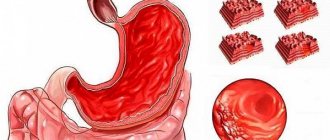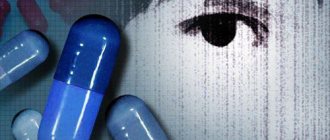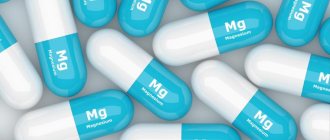When is Glycine indicated?
Glycine is a neurotransmitter. It is actively prescribed for excessive mental stress, deterioration of memory, attention, and decreased performance.
The medication can be used for preventive purposes to improve cognitive functions in people under the age of 60. The course of prophylaxis can last up to 1 month.
The drug is indicated for increased aggression, excitability, and psycho-emotional stress. The medicine relieves the symptoms of these conditions by normalizing inhibitory mechanisms in the brain.
The medication is prescribed for autonomic dysfunction, including the onset of menopause. The drug is actively used for the treatment of ischemic stroke. While taking the medication, brain activity is restored faster.
Other indications:
- head injuries (concussions, skull fractures);
- dementia developing due to alcohol and drug abuse; relieving symptoms of alcohol intoxication;
- consequences of brain hypoxia in children (due to oxygen starvation in the womb or during childbirth);
- behavioral disorders in children and adults;
- mental retardation in a child.
It is acceptable to use the medication as an adjuvant therapy for myocardial infarction and angina attacks. The drug should only be prescribed by a doctor after a complete examination.
Use in the food industry
Glycine is also used as a flavor and aroma enhancer. This substance is known as E640.
Now Foods, Glycine, Pure Powder, 454 g
★★★★★
RUB 1,265
More details
Pharmacodynamics
Glycine normalizes inhibitory processes in the brain, which improves brain activity. It relieves intoxication well in cases of alcohol poisoning and drugs that negatively affect the functioning of the nervous system.
Functions of the drug:
- Nervousness, irritability, aggression are relieved;
- mental abilities increase (attention, memory, thinking);
- the ability to fall asleep is improved;
- signs of brain hypoxia are eliminated.
Due to these effects, the drug is in demand in neurology, narcology, psychiatry, and pediatrics.
Glycine as a participant in other vital reactions
What is DNA? Right! Chemical substrate of heredity. Everyone knows this. But not everyone knows that each of the DNA chains consists of “building blocks” called nucleotides. Each nucleotide includes, among other things, a nitrogenous base. There are two types of nitrogenous bases in DNA: purine (adenine and guanine) and pyrimidine (thymine and cytosine). Glycine takes part in the synthesis of nucleotides with purine bases (Fig. 6).
Figure 6. DNA and purine nitrogen base diagram. a - Model of the famous “double helix”, in which the “bricks” (nucleotides) that form each of the two chains are clearly visible. b - Scheme of a purine nitrogenous base that combines with pentose in the nucleotide; part of this construct is formed by glycine.
Wikipedia
Figure 7. One of the precursors of creatine is glycine.
During the de novo synthesis of purine nucleotides, the nitrogenous base “sits” on a ready-made bond with pentose and is gradually increased. At one of the initial stages, glycine comes into play, thanks to which the structure includes two carbon atoms and one nitrogen atom.
The variety of combinations of nitrogenous bases in the DNA molecule is the basis of biological diversity on the planet.
In addition, glycine is involved in the synthesis of creatine (Fig. 7), an energy accumulator substance in muscles and nerve cells, that is, in those places of the body where it is necessary to maintain a high level of energy.
Instructions for use of Glycine
The medicine can be used sublingually or buccally. The standard dosage is 100 mg, which is suitable for practically healthy children and adults to relieve psycho-emotional stress and improve memory. The tablet form of 100 mg is taken three times a day for 2-4 weeks.
How to properly use Glycine for excitability, sleep disturbances, and frequent mood swings:
- patients under 3 years of age - 50 mg once a day for 1-1.5 weeks;
- patients over 3 years of age - 100 mg twice or thrice a day, course therapy is up to 2 weeks.
The course of therapy can be repeated after a month.
Patients are often interested in how much Glycine can be taken per day for a child under 3 years of age. Daily dose - 100-150 mg, course dose - 2000-2600 mg.
If you have problems falling asleep, you can take 50 (before 3 years) -100 mg (after 3 years) 20 minutes before going to bed.
If there are signs of cerebral ischemia (stroke), it is necessary to take 1000 mg sublingually or buccally (with 5 ml of water) in the first 3-6 hours. Then for 1-5 days, 1000 mg/day. For the next month, it is recommended to drink 100 mg three times a day.
For alcoholism and drug abuse, the medication is prescribed in a dose of 100 mg twice or thrice a day for 2-3 weeks. If required, course therapy is repeated 4-6 times a year.
For adaptation disorder, it is recommended to take 100 mg three times a day. The course of therapy is 4 weeks.
Glycine Bio Pharmaplant
general characteristics
Glycine (aminoacetic acid) has no stereoisomers and is involved in the formation of proteins and purine compounds such as guanine, xanthine, adenine. It is obtained from gelatin and is used to make dietary supplements. To obtain glycine, hydrolysis of proteins or the method of chlorination of carboxylic acids with further interaction with ammonia is used. In the pharmaceutical industry you can find other names - glycine, E640, paraoxyphenylglycine, p-hydroxyphenylaminoacetic or aminoethanoic acid.
This substance is also produced in the human body - glycine is synthesized in the liver from serine and threonine. Its greatest concentration is found in muscles, connective tissue and skin.
Note! The main source for the synthesis of glycine is serine.
Is Glycine okay for children?
The medication is in demand for behavioral disorders in children and adolescents.
The medicine is indicated for autonomic dysfunction in children of middle and high school age. It relieves excitability, nervousness, anxiety and other signs of illness. The medicine is prescribed for increased stress at school. The drug is recommended for adolescents during exams.
The medication is actively used in pediatric practice. Glycine is used in children with consequences of cerebral hypoxia (after birth injuries and intrauterine lesions of the central nervous system), which are accompanied at an older age by a delay in speech development and hyperactivity syndrome. In case of severe disorders of the nervous system, it is possible to use Glycine as an auxiliary medicine.
Glycine helps children learn
The medicine is prescribed in courses. The drug is most often used in children from 3 years of age. But if necessary, the doctor can prescribe the drug to patients under 3 years of age.
Where does glycine come from in the body?
Of course, this wonderful amino acid comes to us with food as part of proteins. Nevertheless, the main source of glycine is the synthesis processes taking place in our body, which makes it possible to classify glycine as a non-essential amino acid.
Its main predecessor is serine. This is also an amino acid, but its molecule has one more carbon atom. What should we do with it? Here nature follows the beaten path: it transfers it to the coenzyme substance tetrahydrofolate, which “loves” one-carbon fragments. As a result of the reaction to light, glycine is born (Fig. 4).
Figure 4. Synthesis of glycine from 3-phosphoglycerate via serine. The numbers indicate enzymes: 1 - phosphoglycerate dehydrogenase; 2 - phosphoserine aminotransferase; 3 - phosphoserine phosphatase; 4 - serine hydroxymethyltransferase.
Vertebrates, including our beloved ones, have another interesting way to produce glycine. The starting materials in the reaction catalyzed by the enzyme glycine synthase are quite simple substances - carbon dioxide and ammonia (in the form of an ion). This reaction also cannot do without the already known “lover” of one-carbon fragments:
CO2 + NH4+ + N5,N10-methylenetetrahydrofolate + NADH + H+ = glycine + tetrahydrofolate + NAD+
Voila! (Sorry for my French.) The resulting glycine is used by the body.
Hyperactivation of the serine glycine biosynthetic pathway can lead to the development of cancer, because this pathway is important for producing large amounts of “building” substances (nucleic acids, proteins, lipids), which are so necessary for actively dividing cancer cells. Antifolate chemotherapy is widely used in cancer treatment [9].
Is it possible to have glycine for diabetes?
In diabetes, encephalopathy may develop due to vascular damage. Patients develop dementia over time. To delay brain destruction and prevent hypoxic conditions, use the drug Glycine. It is drunk in a dosage of 0.1 g three times a day. During therapy, mental abilities improve. Glycine in a standard small dose does not affect glycemic levels. According to studies, changes in glycemia are observed only with a dosage of 5 g per day or more. Since the use of very high dosages of the amino acid is impractical, this possible effect of the drug is not taken into account during treatment.
Introduction
Amino acids are one of the most important substances in living nature. Being fairly small molecules, they play a huge role in living organisms. Like pearls in a necklace, they make up large molecules - proteins, from which all living beings are built - from small to large. The function of amino acids is not limited to the fact that they become building materials for proteins. Amino acids can be specialized for other tasks. The general formula of amino acids is shown in Figure 1.
Figure 1. Structure of amino acids. a - General formula of α-aminoxylates. The components of these compounds are a carbon skeleton, carboxyl and amino groups, as well as a side group that determines the individual properties of different amino acids. It is important that in almost all natural amino acids the amino group is located to the left of the carbon skeleton (L-isomers). α-L-amino acids are the basis of natural proteins. b - Glycine formula. The side group in this molecule is represented by a proton. Thus, glycine is the simplest amino acid of all.
This article is about glycine, the smallest of all theoretically possible amino acids. But despite its tiny side group, represented by a single proton, glycine is an integral component of proteins and a participant in several important processes. The saying “small but mighty” is about glycine!
In the first part of the article, we will look at some proteins and peptides for which glycine is of great importance, and we will also look at where glycine generally comes from in the body and what, besides proteins, it is used for. We will not pretend to have an absolutely complete picture of the functions of glycine, but we will focus on the most important points.
Sources
- N.Yu. Frolova, A.V. Buryakina, T.I. Melnikova // Neuroprotectors in pediatric practice // Pharmaceutical market // 2016
- M. V. Putilina // Modern ideas about nootropic drugs // Journal “Attending Physician” // 2006
- O.V. Grigorova, L.V. Romasenko, A.Z. Faizulloev, T.I. Vazagaeva, L.N. Maksimova, Ya.R. Narcissov // Use of Glycine in the treatment of patients suffering from adaptation disorder // Practical medicine // 2012
- M.R. Chuiko, N.M. Efremova, V.I. Skvortsova // Efficacy and safety of the use of glycine and limontar in the complex therapy of dyscirculatory encephalopathy and encephalopathy in insulin-dependent diabetes mellitus // Journal of Neurology and Psychiatry // 2010.
The effect of the drug Glycine
Contraindications and side effects of glycine
As already mentioned, glycine is a natural substance that is constantly produced by our body and enters it in food, therefore glycine is familiar to the body and has no toxic effects. Only individual intolerance is indicated as a contraindication for glycine. In extremely rare cases, an allergy to glycine may occur and should be monitored for such reactions.
Considering that glycine has no serious contraindications or side effects, it is sometimes taken in large doses, but this can hardly be considered justified. It is better to follow the manufacturer's recommendations, and if you have any questions, consult your doctor.
Who is recommended to take glycine?
Considering the nootropic and proteinogenic properties of glycine, it is successfully used in many cases:
- athletes and everyone who suffers from overwork,
- those who experience increased stress on joints and tendons,
- students and people engaged in intense mental work,
- those who suffer from brain damage (only as prescribed by a doctor and as part of medical therapy).
Taking glycine can improve mental stability, increase performance, both mental and physical, reduce the negative effects of taking alcohol or medications, improve mood and relaxation, protect the ligaments and improve the health of the joints and vascular system.
In general, glycine is an affordable, safe and well-known remedy that is gentle and provides many benefits.







